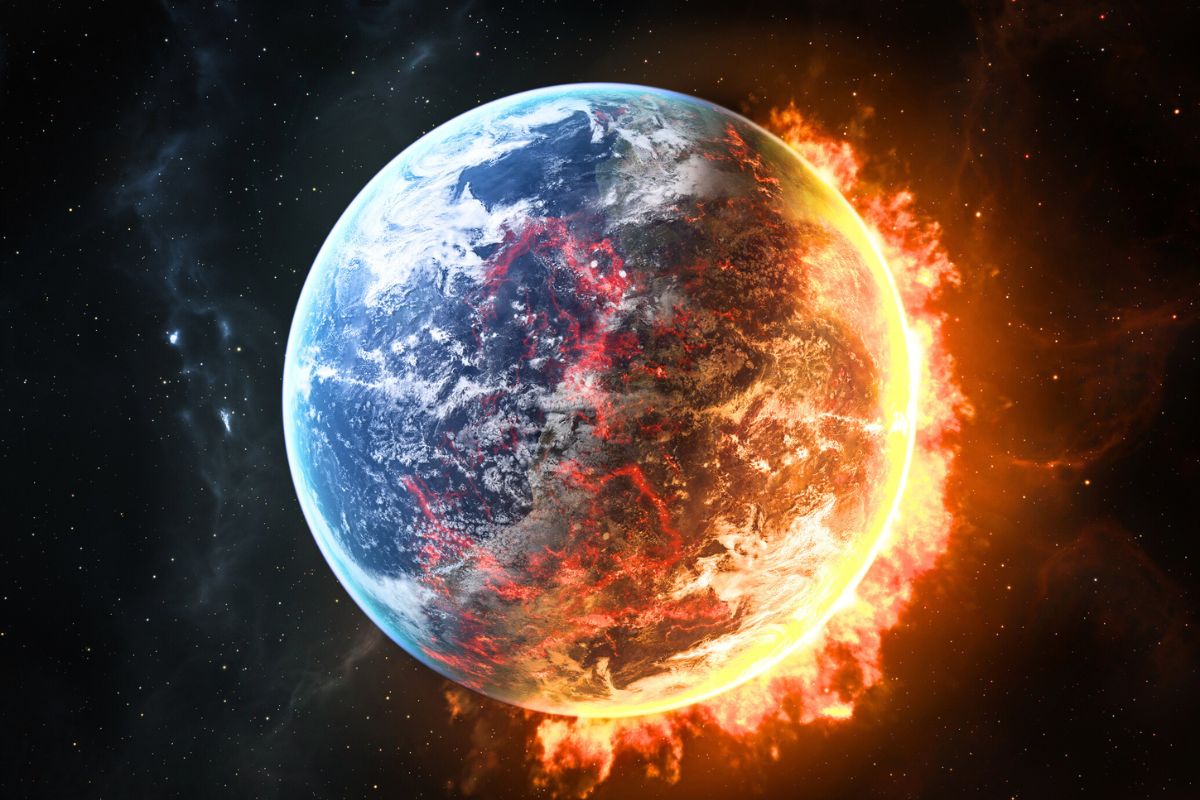Scientists attempt to predict the date of humanity’s extinction due to climate change

It sounds like the plot of a sci-fi thriller, but researchers have put a date — albeit a distant one — on when humanity could disappear from Earth. And the culprit, they say, won’t be an asteroid or alien invasion, but climate change on a scale far beyond anything we’ve seen before.
A future too hot to survive
According to climate modelling using advanced supercomputers, almost all mammals, including humans, could vanish within the next 250 million years. The primary reason? Temperatures so extreme they would surpass our species’ ability to cope.
Alexander Farnsworth, lead author of the study and a research associate at the University of Bristol, explains that “wet-bulb” temperatures — a combination of heat and humidity — exceeding 35°C for more than six hours would be lethal. This is true even with unlimited drinking water, total shade, no clothing, and complete rest. “Dry-bulb” temperatures above 40°C, paired with low humidity for prolonged periods, would also be fatal.
In the scenarios projected, average global land temperatures could soar 25 to 30 degrees Celsius higher than today, reaching between 40°C and 70°C in some regions.
The drivers of an uninhabitable Earth
The projected heat surge would be fuelled by a sharp rise in carbon dioxide levels — not solely from human activity, but from tectonic shifts triggering massive volcanic eruptions. Add to that a brighter, more intense Sun radiating more energy onto Earth, and the conditions begin to look apocalyptic.
Complicating matters further, the continents are expected to merge into a new supercontinent roughly 250 million years from now. Geologists predict it will form around the equator, the hottest band on the planet. Only about 8–16% of land would remain habitable for mammals, drastically reducing viable ecosystems.
Could technology save us?
The researchers note that human ingenuity has always been a survival advantage. Controlled-environment shelters with advanced air conditioning could, in theory, keep small populations alive. But Farnsworth warns that we would also need “facilities to support food production” in these harsh conditions, as extreme heat would wipe out most traditional agriculture.
While this apocalyptic vision is set unimaginably far in the future, the findings highlight just how temperature-sensitive mammals are — and how fragile our food systems could become if global heating spirals out of control.
A warning for the present
Even though the doomsday scenario is hundreds of millions of years away, scientists stress that it offers a cautionary lesson for today. We may not be facing the formation of a supercontinent anytime soon, but our current climate crisis is already pushing ecosystems — and human resilience — to their limits.
If nothing else, it’s a stark reminder: the more we understand about our planet’s limits now, the better chance we have of avoiding our own early exit.
Loading...

